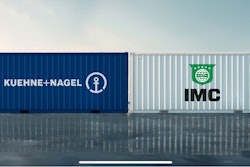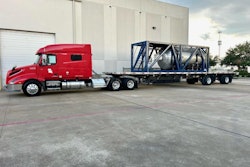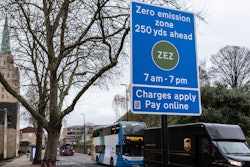The dictionary defines volatile as “liable to change rapidly and unpredictably.” That is a good way to describe diesel fuel prices. Data from the U.S. government charts diesel fuel prices from 1995 to 2024. In 1995, diesel fuel was at $1.129 a gallon and dipped to $1.078 in 1998. It climbed a bit in 2008, spiking to $3.859 and then falling to $2.517 in 2009. By 2012 it was back at $4.033. Four years later, in 2016, it was only $2.372 a gallon. In 2022 diesel was $5.183 and as of late October 2024, it was $3.557 a gallon.
Regardless of the price, diesel fuel accounts for between 20% and 25% of a fleet’s marginal cost of operation, according to the American Transportation Research Institute. In its An Analysis of the Operational Cost of Trucking: 2024 Update, fuel was costing fleets $.553 of the $2.270 average cost per mile in 2023 — or about 24%.
While the cost and availability of fuel are not things you can easily control, you can do things to improve fuel economy.
Some low-cost options
Investments can be made to improve fuel economy, but fleets also have some no- or low-cost options available to them.
Check engine parameters
Every OEM has engine parameters that can be reset by the fleet. Many of which impact fuel economy. This includes those that focus on limiting speed both at the pedal and in cruise control and at limiting idle times.Train/reward drivers
Drivers have a huge impact on fuel economy — some say they can affect fuel economy by as much as 30%. Include fuel economy in your driving training sessions. Reward drivers for the percentage of time they operate using cruise control, and their ability to avoid hard braking and fast starts.Keep tires properly inflated
A tire that is underinflated by 10 psi can result in a .5% to 1% decrease in fuel economy. You can reinforce the importance of checking tire pressure during drivers’ pre- and post-trip inspections to ensure tires are at their proper inflation pressure. There are also tire pressure monitoring and inflation systems you can add to tires that will either alert drivers to low inflation pressure or will automatically keep tires at their proper inflation pressure.Re-evaluate routing
Review your current vehicle routing to see if there are changes you can make that will improve your fuel efficiency. Also look at the percent of empty backhauls and see if there are any opportunities to decrease the percent of time your trucks return to your operation empty.Keep trucks well-maintained
When trucks are well-maintained they operate at peak efficiency. Keep on top of preventive maintenance inspections and service and monitor PM compliance to make sure all your trucks are making it into the shop for their scheduled PM service.Even little things add up
Small investments in things like wheel covers and vented mudflaps can lead to incremental improvements in MPG as can adjusting the position of the fifth wheel.Some investments are worth it
In addition to the inexpensive fuel economy improvement options, there are other investments that, while requiring an outlay of cash, have a good return on investment and boost MPG.
Tractor aerodynamic devices
Today’s tractors are coming off the production lines with a much more aerodynamic shape than in the past. However, items like cab extenders, chassis fairings, etc. can boost MPG to save fuel.Trailer aerodynamic devices
Don’t stop at the tractor when it comes to optimizing for fuel economy. The most aerodynamic tractor will see its fuel economy suffer if it is pulling a non-aerodynamic trailer. Consider adding trailer skirts, trailer undertray devices and trailer tail devices. Closing the tractor-trailer gap also improves fuel economy.Low rolling resistance tires
Tire rolling resistance can account for one-quarter of a truck’s fuel consumption. Switching to low rolling resistance tires can increase MPG.When it comes to improving fuel economy there are both big and small steps you can take to improve and even surpass the seven miles that most fleets are currently getting from a gallon diesel fuel.
And while the price of diesel today seems to be trending downward, history has shown us that downward trends can easily be followed by huge cost spikes. By focusing on maximizing fuel economy today, you will be insulating yourself from that next big upswing in diesel prices.








